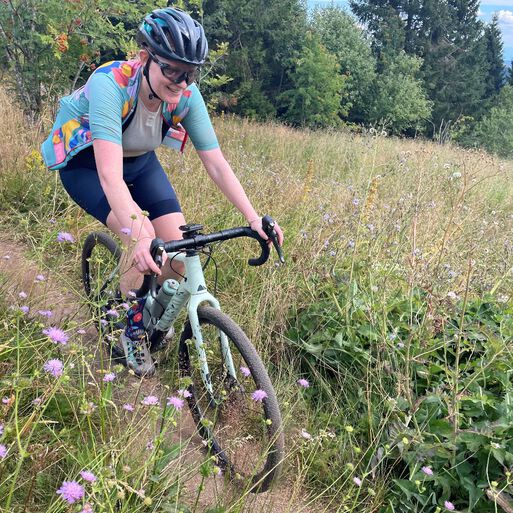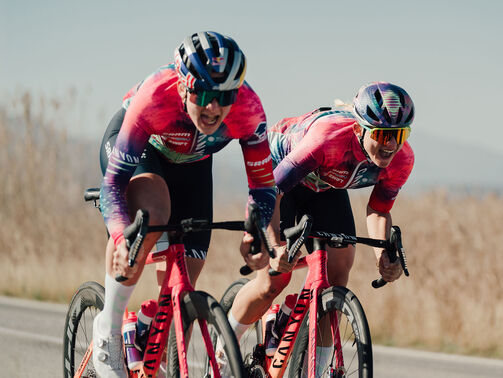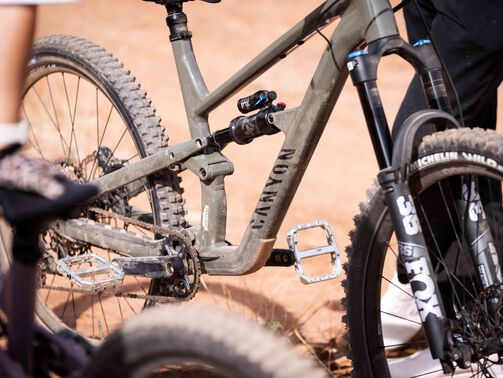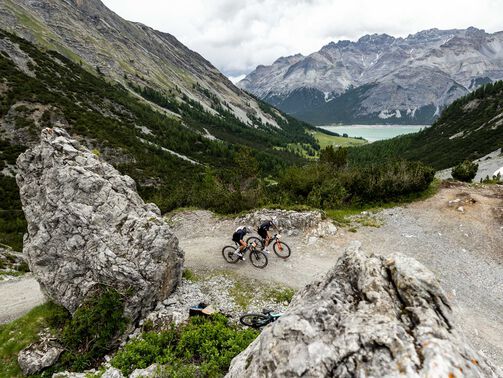Trail bike vs cross-country bike - understanding the differences
If you want an MTB but you’re not sure whether to choose a trail bike or cross-country bike, keep reading.


I remember very clearly when I decided I wanted a mountain bike. “I’ll be able to ride on trails that my gravel bike can’t handle – I’ll jump on the website and order one now!” Oh, how naïve I was.
The thing about mountain bikes is there’s no such thing as simply buying a generic mountain bike. This isn’t to put you off the idea – you just need to know the type of riding you really want to do before you dive in.
I knew I didn’t want to do enduro or downhill racing, and where I live isn’t suitable for fat biking. I also knew I didn’t want a dirt jump bike. But a trail bike? Maybe. A cross-country bike? Also maybe. On the face of it, trail bikes and cross-country bikes appear quite similar in terms of their capabilities. Read on to find out how you too can make the right decision.
Contents
What’s the difference between a trail bike and a cross-country bike?
Trail bikes are great all-rounder mountain bikes compared to cross-country bikes, which climb and accelerate really well. On the other hand, cross-country bikes are short travel bikes designed to be raced in XC and Marathon events, which involve quite a bit of climbing. They're great at tackling the gnarliest trails at lightning speed.
Trail bikes are typically used for adventurous riding on varied, natural trails or at trail centres. They are usually mid-travel full-suspension mountain bikes, but can also be hardtails.
Types of mountain bikes
The world of mountain bikes is big and colourful. There’s a bike for every kind of trail, terrain and time of the year. Let’s break it down.
Trail mountain bikes
Ready for anything as the ultimate all-rounder. Typically 130 mm-160 mm of travel with full-suspension and hardtail options. As the biggest category of mountain bikes, there’s a lot of choice. Shorter travel bikes will pedal a little easier than the longer travel bikes. Consider if you would prefer longer travel for gnarlier trails.

Enduro mountain bikes
Efficient at pedalling and ready to take on fast, technical descents. Enduro mountain bikes have 160 mm-180 mm of travel which is ideal for gnarlier trails.
Downhill mountain bikes
Long, slack bikes for descending the roughest terrain. Downhill MTBs have between 180 mm and 200 mm of travel to soften the harshest blows on black and black diamond trails.
Cross-country mountain bikes
Short-travel mountain bikes with great climbing abilities. Ideal for longer events like Marathon as well as XC racing.
Dirt jump bikes
Want to get some air? Hit the jumps with these small but mighty street jump bikes and be the next Tomomi or Fabio.
Fat bikes
Do you ride in sand or snow? We have a bike for that. With their chunky tyres and rigid frames, fat bikes are amazing, even when the weather isn’t.
How do XC MTBs compare to other MTBs?
Cross-country mountain bikes really shine when they’re climbing and racing. There are many reasons for this, which we’ll dive into now.
Geometry
A cross-country MTB has a shorter wheelbase than a lot of other mountain bikes. This enables them to turn faster and be more nimble on the trail. Combined with a steeper head angle, you’ve got a bike that reacts fast to the trail ahead.
The riding position on XC bikes is more aggressive, which enables you to get lower over the cockpit. This comes in handy when attacking your opponents and choosing quick lines on techy trails.
Terrain
XC bikes are at home on hard-packed, dusty trails as well as rock gardens and rooty sections. Some riders will even get airtime during an XC race.
If you’re competing in both short track (XCC) and Olympic (XCO) style races, you have to use the same bike. While the course distance varies, the terrain is very similar.

Suspension
A lot of XC bikes are full suspension, but not all. Whether hardtail or full-suspension bike, you’ll have around 100 mm-120 mm of front suspension to soften any blows as you ride.
Rear suspension on bikes like our Lux family offer even more comfort for tackling techy trails. With between 100 mm and 110 mm of rear suspension, you’ll barely notice the lumps and bumps beneath the tyres.
Hardtails like the Exceed and Grand Canyon are more efficient at carrying speed than full-suspension bikes. You can use more energy moving forward which is particularly useful when you’re climbing.
Frame
What is a trail bike best for?
Trail bikes come to the fore at bike parks and trail centres. They’re complete all-rounders that take on anything in their path. Steep descents, drop offs and pump tracks are child’s play for a trail bike.
If you’re looking to develop your mountain bikes skills, a trail bike will enable you to gradually build up to more “scary” trail features. While you’ll be a little slower up the climbs than your friends on XC bikes, you’ll be able to take on harder trails with a trail bike.
What is a cross-country bike best for?
If you want to race XCC and XCO events, a cross-country bike is the winner here. You can improve your speed, agility and technical skill on a cross-country mountain bike. A lot of XC bikes also have front suspension lockout levels on the bars so that you can pedal even more efficiently uphill.
A lot of pros are now choosing XC bikes without a dropper post to save weight. Check out the Lux World Cup mountain bikes if you’re interested in this kind of setup.

Should you choose a trail bike or a cross-country bike?
There is no right answer. What matters is you get the bike you’ll love riding on the trails you want to ride.
Me? I ended up going for a trail bike since I wasn’t interested in racing. I really wanted an MTB I could improve my skill on bit by bit. I’ll start on the blue trails and hopefully build up to red and black trails before too long.
I ultimately chose a Neuron as it is full-suspension without being too long in the travel. While all our trail bikes pedal well, the Neuron is designed for adventures and that’s certainly where I’m headed.
If you’re a total beginner, the Grand Canyon is a great place to start. You’ll quickly become acquainted with what it’s like to ride trails and you’ll be able to dial in your riding position to feel confident.
The Stoic will teach you all you need to know about sessioning trails and hitting jumps. With its aluminium rigid frame, you’ll be able to channel all your energy into getting air time.
The Spectral range is a great option if you’re already familiar with technical trails and really want to nail some bigger features.
Discover our Mountain Bikes
Did this article help?
Thank you for your feedback
-
 About the author
About the authorGrace Lambert-Smith
Meet Grace, our SEO Copywriter who calls the Peak District National Park home. An experienced long-distance road cyclist, she's now focused on mastering the art of gravel riding and mountain biking. With a passion for telling cycling stories through the written word, Grace is always ready to share her experiences with others.
















